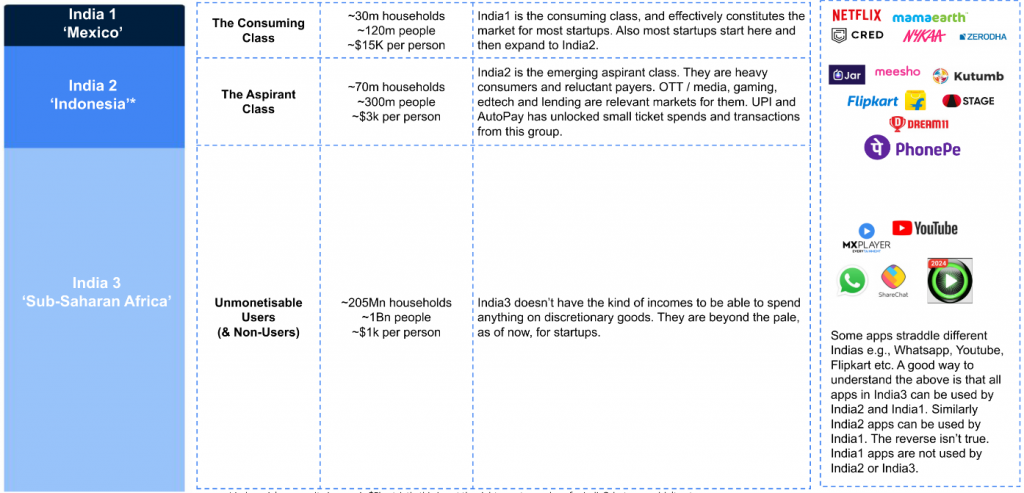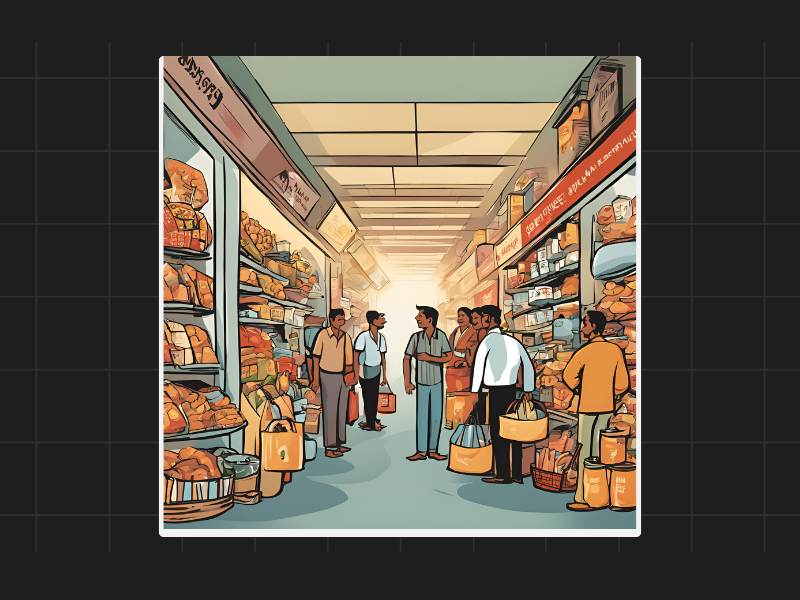A recent study on India’s consumption patterns reveals interesting insights about the country’s diverse demographics. This research divides India into three distinct segments based on income and consumption habits. Understanding these segments can provide a clearer picture of India’s market dynamics and future growth potential.

India 1: The Consuming Class

India 1 represents the top consuming class, similar to Mexico in economic terms. This segment includes about 30 million households, or roughly 120 million people. With a per capita income of around $15,000 (about Rs. 1 lakh), this group is the primary target for many startups and businesses. They have significant purchasing power and are the main consumers of various products and services. Companies often begin their market strategies by targeting this affluent group before expanding to other segments.
India 2: The Aspirant Class

India 2, referred to as the aspirant class, consists of individuals striving to join the consuming class. This segment includes about 30 crore people, or seven crore households, with a per capita income of approximately $3,000 per year. This group is the emerging middle class, showing potential for future growth. They are cautious spenders and typically engage in small-ticket transactions. The stock market closely watches this segment, anticipating their transition to higher spending and investment levels. Over the next few years, this group’s income is expected to grow significantly, boosting overall economic activity.
India 3: The Struggling Class

India 3 is likened to sub-Saharan Africa in terms of economic status. This group includes about 100 crore people, earning less than $1,000 per year, or roughly Rs. 6,000-7,000 per month. Currently, this segment has minimal disposable income and does not contribute significantly to the consumer market. However, this group represents a vast potential market for the future. As basic needs such as housing, food, and clothing are met, and incomes gradually rise, they will start contributing more to the economy. The transition of this segment to higher economic levels will be a slow but steady process over the coming decades.
The immediate focus for businesses and market intermediaries remains on India 1 and parts of India 2. These segments provide the most substantial returns on investment in the short term. However, the real boost to the market will come from the middle layer, India 2, as their incomes rise and they start spending more. The gradual upliftment of India 3 will also play a crucial role in the long-term growth of the economy. By understanding these segments, companies can better strategize their market approaches and anticipate future trends.

Disclaimers and disclosures : https://tinyurl.com/2763eyaz
If you have any questions, please write to support@weekendinvesting.com












